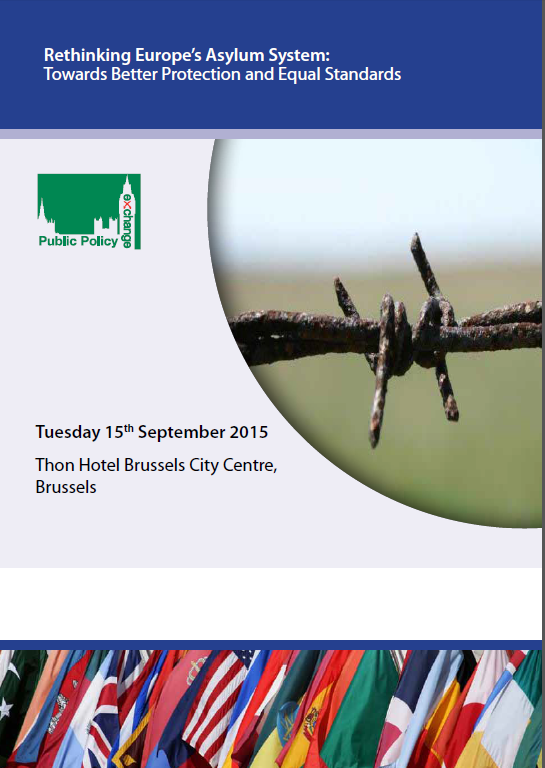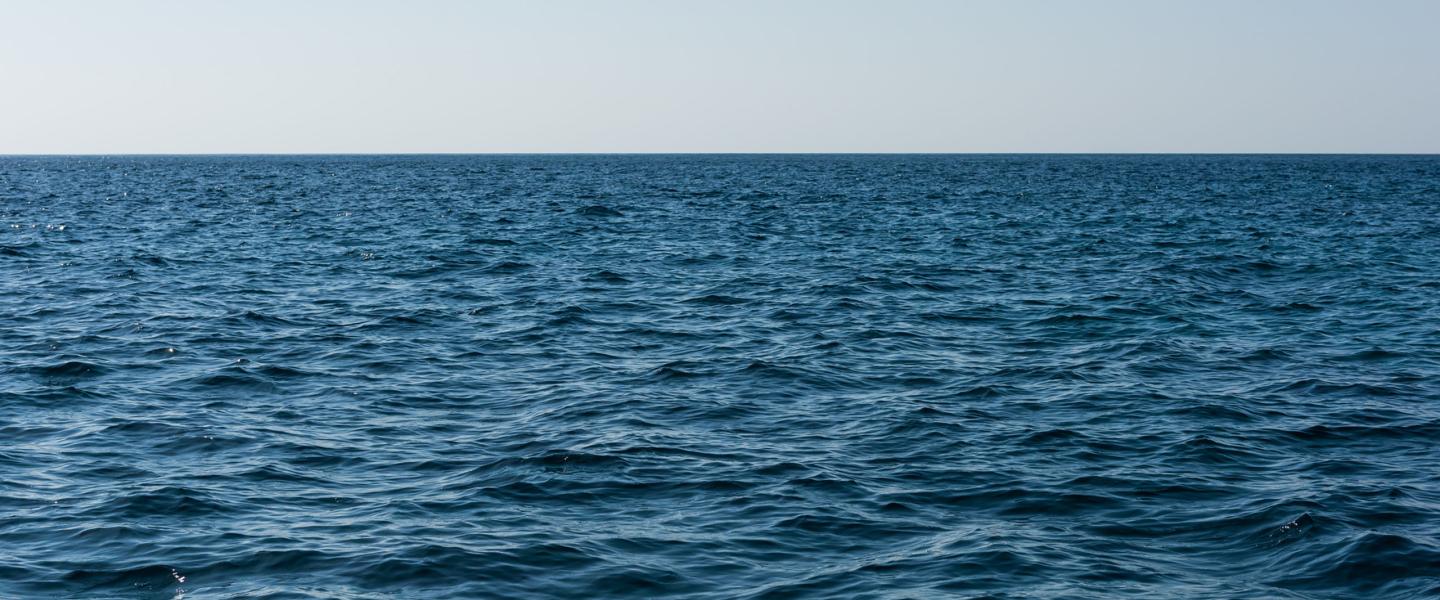
From Human Rights at Sea. As global migration continues, the scale and scope of the issue and its related challenges mean that a new approach is needed in terms of law, policies and the handling of persons moving from State to State seeking asylum and a new home. This movement across land and sea borders will impinge on all aspects of individual State governance, as well as commercial operations from the daily running of the Channel Tunnel, to the interdiction and arrest of people traffickers and the rescue at sea most notably evidenced in the ongoing migrant crisis in the Mediterranean today.
Event: Rethinking Europe’s Asylum System: Towards Better Protection and Equal Standards
Date: Tuesday 15th September 2015
Time: 10:00am — 4:30pm
Venue: Thon Hotel Brussels City Centre
“We need to implement the Common European Asylum System, adopted in June last year, without delay. No rules are perfect, and the new rules are naturally the result of compromise. Currently, one and the same applicant for asylum can have a 70-75% chance of being granted asylum in one country of the European Union and less than 1%, with the same reasons, in another country. We therefore need the new EU rules in place swiftly to ensure an asylum seeker will have the same chances of being granted asylum in any of the Member States.”
Jean-Claude Juncker, President, European Commission
November 2014
According to the latest figures provided by Eurostat, more than 625,000 persons have applied for asylum in the EU in 2014, representing a 44% increase on the previous year and the highest number of applicants within the EU since the peak in 1992. During the same period, EU Member States have granted protection to more than 185,000 asylum applicants, up by almost 50% compared with 2013. In addition to these figures, other issues provide cause for concern, such as the continuously growing number of unaccompanied minors seeking for protection (23,100 applications in the EU-28), another category that requires precise measures in order to be protected.
With the establishment of the Common European Asylum System, EU Member States have committed to align their asylum legislation and increase cooperation with non-UE countries. However, the rise of new armed conflicts – particularly in the Middle-East area – has led to an increase in the number of asylum applicants, therefore compelling the European Union to develop and implement new legislative measures such as the revised Qualification (2011), Procedure and Conditions Directives (2013), as well as the new Dublin III Regulation. This new framework has contributed to the implementation of common minimum standards for asylum and has encouraged cooperation and coordination to ensure that asylum seekers are treated equally in an open and fair system wherever they apply. Yet, it has also raised criticism due to its procedural delays, lack of harmonisation and other persisting flaws.
On the other hand, the ongoing crisis situation in the Mediterranean has reinforced the idea that additional measures must be taken immediately to better manage migration in all its forms . In May 2015, the European Commission launched the European Agenda on Migration, a strategy that aims to reduce incentives for illegal immigrants and human trafficking networks, improve the management of the external borders, strengthen the common asylum policy, and develop innovative policies on legal immigration.
The current legislative framework gives the EU and its Member States the opportunity to further implement an efficient asylum system aimed at providing protection and dignity to those fleeing persecution. However, although several improvements have been made so far, the European Union has yet to find the right strategy to tackle all issues deriving from migration.
This timely international symposium will examine the current state of affairs around the recast directives and regulations for asylum at EU level, as well as assess the implementation challenges that Member States face when integrating them into their national legislation. It will offer a vital platform to discuss the current framework for granting or withdrawing international protection and explore how all stakeholders must coordinate and cooperate in order to provide better protection for asylum seekers, which includes finding the right compromise between guaranteeing human rights and ensuring that immigration controls are effective and efficient.
The Symposium will support the exchange of ideas and encourage delegates to engage in thought-provoking topical debate with local and regional practitioners and policymakers at EU level.
Event and Registration details HERE
Flyer HERE
From Human Rights at Sea. As global migration continues, the scale and scope of the issue and its related challenges mean that a new approach is needed in terms of law, policies and the handling of persons moving from State to State seeking asylum and a new home. This movement across land and sea borders will impinge on all aspects of individual State governance, as well as commercial operations from the daily running of the Channel Tunnel, to the interdiction and arrest of people traffickers and the rescue at sea most notably evidenced in the ongoing migrant crisis in the Mediterranean today.
Event: Rethinking Europe’s Asylum System: Towards Better Protection and Equal Standards
Date: Tuesday 15th September 2015
Time: 10:00am — 4:30pm
Venue: Thon Hotel Brussels City Centre
“We need to implement the Common European Asylum System, adopted in June last year, without delay. No rules are perfect, and the new rules are naturally the result of compromise. Currently, one and the same applicant for asylum can have a 70-75% chance of being granted asylum in one country of the European Union and less than 1%, with the same reasons, in another country. We therefore need the new EU rules in place swiftly to ensure an asylum seeker will have the same chances of being granted asylum in any of the Member States.”
Jean-Claude Juncker, President, European Commission
November 2014
According to the latest figures provided by Eurostat, more than 625,000 persons have applied for asylum in the EU in 2014, representing a 44% increase on the previous year and the highest number of applicants within the EU since the peak in 1992. During the same period, EU Member States have granted protection to more than 185,000 asylum applicants, up by almost 50% compared with 2013. In addition to these figures, other issues provide cause for concern, such as the continuously growing number of unaccompanied minors seeking for protection (23,100 applications in the EU-28), another category that requires precise measures in order to be protected.
With the establishment of the Common European Asylum System, EU Member States have committed to align their asylum legislation and increase cooperation with non-UE countries. However, the rise of new armed conflicts – particularly in the Middle-East area – has led to an increase in the number of asylum applicants, therefore compelling the European Union to develop and implement new legislative measures such as the revised Qualification (2011), Procedure and Conditions Directives (2013), as well as the new Dublin III Regulation. This new framework has contributed to the implementation of common minimum standards for asylum and has encouraged cooperation and coordination to ensure that asylum seekers are treated equally in an open and fair system wherever they apply. Yet, it has also raised criticism due to its procedural delays, lack of harmonisation and other persisting flaws.
On the other hand, the ongoing crisis situation in the Mediterranean has reinforced the idea that additional measures must be taken immediately to better manage migration in all its forms . In May 2015, the European Commission launched the European Agenda on Migration, a strategy that aims to reduce incentives for illegal immigrants and human trafficking networks, improve the management of the external borders, strengthen the common asylum policy, and develop innovative policies on legal immigration.
The current legislative framework gives the EU and its Member States the opportunity to further implement an efficient asylum system aimed at providing protection and dignity to those fleeing persecution. However, although several improvements have been made so far, the European Union has yet to find the right strategy to tackle all issues deriving from migration.
This timely international symposium will examine the current state of affairs around the recast directives and regulations for asylum at EU level, as well as assess the implementation challenges that Member States face when integrating them into their national legislation. It will offer a vital platform to discuss the current framework for granting or withdrawing international protection and explore how all stakeholders must coordinate and cooperate in order to provide better protection for asylum seekers, which includes finding the right compromise between guaranteeing human rights and ensuring that immigration controls are effective and efficient.
The Symposium will support the exchange of ideas and encourage delegates to engage in thought-provoking topical debate with local and regional practitioners and policymakers at EU level.
Event and Registration details HERE
Flyer HERE
